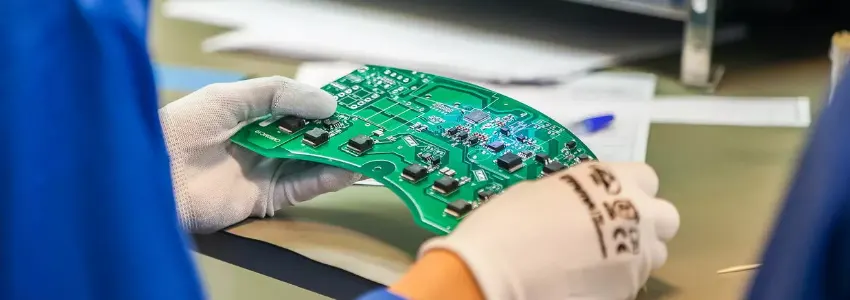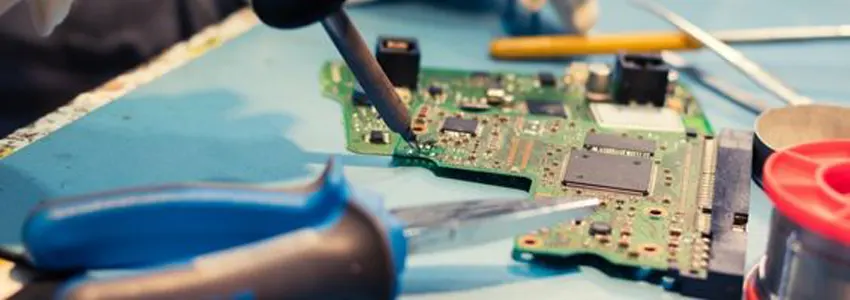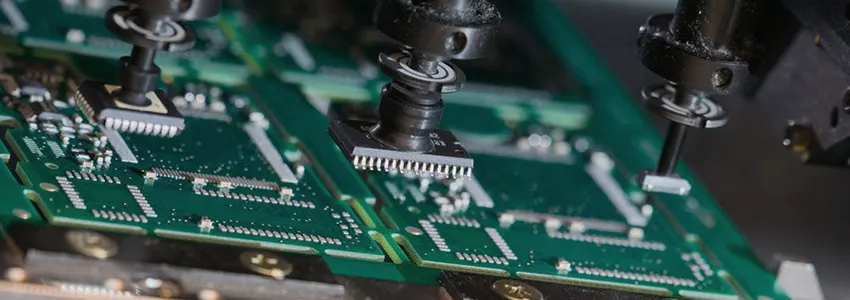- +86-0755-23597570-6067 Mon-Sun 0. 00-23. 59

Low Volume PCB Assembly involves producing a relatively small quantity of PCB assemblies, usually ranging from several units to a few hundred or thousand. This assembly approach is particularly suitable for businesses needing fewer PCBs for purposes such as prototyping, product testing, serving niche markets, or conducting limited production runs.
The subsequent phase in your low-volume PCB assembly process is the acquisition of necessary parts and materials for production. At Fastlink, our experienced procurement team ensures smooth and timely production, leveraging a well-established structure and rigorous processes. Additionally, if required, we offer an extra service of functional testing for added value.
Low volume PCB assembly has several advantages, particularly for businesses and projects that require flexibility, testing, and cost-efficiency. Here are some key benefits:
1. Cost-Effectiveness for Prototyping and Small Batches: Low volume assembly is ideal for prototyping and small batch production. It allows for testing and evaluation without the significant financial commitment required for high-volume production. This approach can be crucial for startups and small businesses where budget constraints are a primary consideration.
2. Flexibility in Design Changes: In the early stages of product development, design modifications are common. Low volume assembly offers the flexibility to make these changes with minimal impact on cost and time. This adaptability is crucial for iterating designs based on testing feedback or changing requirements.
3. Faster Turnaround Times: With smaller production runs, the assembly process is typically quicker. This expedited turnaround can be vital for projects with tight deadlines or for those requiring rapid development cycles.
4. Quality Control and Testing: Low volume production allows for more focused quality control and thorough testing of each unit. This close scrutiny helps in identifying and rectifying potential issues early in the development process, ensuring a higher quality final product.
5. Customization and Specialization: For niche applications or specialized products, low volume assembly enables customization that might not be economically viable in high-volume production. It allows manufacturers to cater to specific customer needs or unique market segments.
6. Reduced Inventory and Storage Needs: Since low volume assembly involves producing smaller quantities, it reduces the need for large inventory storage. This can be a significant advantage for companies with limited storage space or those looking to minimize inventory costs.
7.Market Testing and Validation: Low volume assembly is a practical approach for market testing. Producing a limited number of units allows companies to gauge market reaction and validate their product before committing to mass production.
Thorough testing and inspection are vital elements of the PCB assembly process, ensuring functionality and identifying potential errors before deployment. Here’s an overview of key tests performed on low-volume PCBs:
● Assesses the integrity of electrical connections within the PCB.
● Utilizes test points or pins that pierce the board.
● Evaluates each circuit element and provides information on errors.
● Ideal for verifying the overall function of the low-volume PCBA.
● Employs cameras and communication equipment to detect errors throughout the assembly process.
● Captures images of the PCB using 2D and 3D cameras.
● Compares these images to the PCB design schematics for accuracy.
● Offers a high degree of precision in identifying component placement errors.
● Performed before and after assembly to identify visible defects.
● Utilizes human eyes and cameras to detect issues.
● Identifies missing components, solder defects, and other visible flaws.
● Prone to human error compared to automated methods.
● Evaluates the performance of the assembled PCB.
● Identifies errors that may impact the board’s overall functionality.
● Typically performed as the final stage of assembly and serves as the final quality control process.
● Particularly relevant for low-volume PCBA due to its focus on verifying functionality.

After successful testing, your project progresses to the next crucial step: assembling prototypes. These prototypes will be used for further testing, employing either sequential or parallel testing methods. Due to the small production quantities involved in prototyping, several assembly options are available.
1. Direct No-Populate (DNP) Assembly: This option avoids the addition of unnecessary components to the PCB prototype. You can begin testing directly by placing only the essential components required for initial testing.
2. Variant Assembly: This method involves separating and assembling distinct sections of the system onto different circuit boards. Each board will have a specific set of components, allowing for individual testing of each section.
3. Leaded Solder Assembly: Rework may be necessary during the testing phase of certain prototypes. In these cases, using leaded solder instead of lead-free components facilitates repairs and modifications.
4. Changeable Surface Finish: Opting for surface finishes that can be easily reworked or removed offers greater flexibility. This approach saves time and effort if you need to redesign your prototypes during the testing process.
Fastlink offers comprehensive solutions for your small-batch PCB assembly needs, with customized features and advanced manufacturing capabilities to deliver quality results. Our turnkey services cover the entire process, from parts procurement and PCB fabrication to final assembly, testing, and delivery. We ensure a risk-free experience and quick turnaround times, making us a reliable partner for your low-volume projects.
The following services allow us to meet the requirements of small-batch PCB assembly:
We meticulously review your design files (Gerber, BOM, diagrams, assembly drawings) to address any potential engineering concerns. As a turnkey provider, we handle PCB panelization for cost optimization and efficient assembly. We recommend solder mask openings for high yield while preventing soldering defects. Our engineers thoroughly review your parts list against PCB files, seeking clarification on any component issues before procurement. This comprehensive DFM service minimizes errors, lowers costs, and speeds up production.
DFT is crucial for ensuring manufacturing efficiency and product quality. We offer professional engineering support to distribute test points across your PCB and review your test procedures. All bare boards go through 100% E-testing, and we provide various verification methods like manual inspection, AOI, ICT, FCT, and X-ray.
Our IC burning service ensures a one-stop shop for your low-volume assembly project. We program ICs before or after reflow soldering, supporting various packages and re-taping for improved SMT efficiency and cost reduction.

We offer comprehensive turnkey solutions for your low-volume PCB manufacturing and assembly needs. Our capabilities include:
● Advanced Facility: Our state-of-the-art facility boasts the latest tools and equipment, allowing us to handle even the most demanding low-volume projects.
● Experienced Teams: Our team of skilled professionals possesses extensive experience in low-volume PCB assembly, ensuring quality and efficiency.
● Cost-Effective Solutions: We understand that low-volume projects often come with budget constraints. We offer flexible options and work within your budget to deliver high-quality results.
● Rigorous Testing: We employ a multi-stage testing and inspection process that includes AOI, microscopic inspection, x-ray inspection, FPT, and visual inspection. This ensures that your PCBs meet the highest standards.
● Flexible Board Options: We offer both single and double-sided boards, including flexible and rigid-flex options, ideal for low-volume projects with smaller quantities (typically less than 250 boards).
● Diverse Assembly Techniques: We utilize a range of component mounting techniques to accommodate your specific needs, including SMT, PTH, BGA, uBGA/Micro BGA, CSP, and others.
● Advanced Soldering: We employ various soldering techniques, including selective wave soldering, Pb88 soldering, HMP soldering, and Au80 soldering, to ensure optimal reliability and performance.
● Seamless Design Integration: We accept PCB designs in various file formats, such as Gerber RS-274X, 274D, Eagle, and AutoCAD’s DXF and DWG. Simply share your design files along with your Bill of Materials (BoM) to get started.
1. Flexible Manufacturing: Our multiple assembly lines can adapt seamlessly to your unique product requirements, ensuring optimal production efficiency for small orders.
2. Competitive Pricing: We offer highly competitive pricing for low-volume assemblies, making your project cost-effective and budget-friendly.
3. Quick Turnaround: We understand that time is of the essence, especially for small projects. That’s why we pride ourselves on fast turnaround times, delivering your PCBs quickly and efficiently.
4. Single Point of Contact: We value clear communication and efficient collaboration. When you choose Fastlink, you’ll benefit from a dedicated single point of contact for your entire order, simplifying the process and ensuring seamless support.
5. Turnkey PCB Assembly Services: We offer comprehensive turnkey solutions, taking care of everything from component sourcing and procurement to final testing and delivery. This allows you to focus on your core business while we handle the expert assembly of your low-volume project.